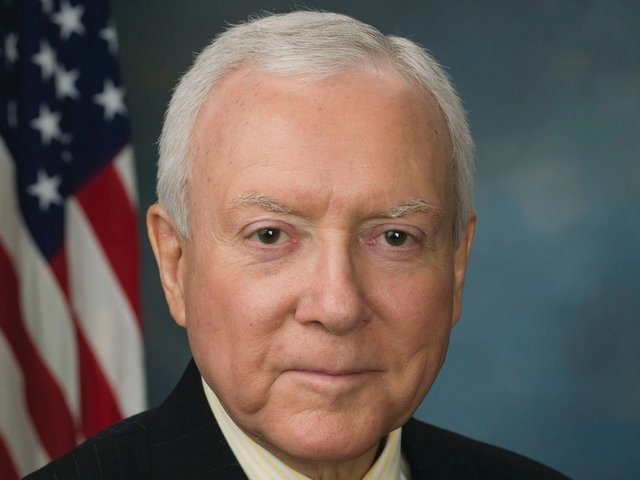A chill went down the spines of collectors when news broke late last year that the US government was scrutinising private museums to discover whether they benefit their wealthy founders more than the general public. In November, the Senate Finance Committee sent a letter to 11 museums set up by collectors asking about their opening hours, attendance figures and the role of the founders in day-to-day operations. Six months later, the results are in.
On 17 May, Orrin Hatch, the Republican senator and chairman of the committee, sent a summary of his findings to the Internal Revenue Service (IRS). A copy was provided exclusively to The Art Newspaper. Hatch wrote: “Despite the good work that is being done by many private museums, I remain concerned that this area of our tax code is ripe for exploitation.”
Lightly advertised venues The committee found that private museums operate across a wide spectrum. The Broad in downtown Los Angeles, for example, is free to visit, and has welcomed 500,000 visitors since it opened in September. Other institutions are “lightly advertised” and “require reservations made weeks or months in advance, thereby effectively narrowing the visitor pool to a small group of patrons”. Some institutions, such as the gallery operated by the Linda Pace Foundation in San Antonio, are open for as little as 20 hours each week.
Rick Moore, the president of the Linda Pace Foundation, said in a statement that it provides “many significant benefits” to the public and plans to open a 14,000 sq. ft exhibition facility designed by David Adjaye in 2018.
Nine of the 11 institutions that received Hatch’s letter declined to—or could not be reached for—comment.
The US has 43 private art museums, the second-most of any country, according to a recent survey by the collector database Larry’s List. The 11 museums on Hatch’s list alone have assets totalling $1.6bn, according to their 2013 federal tax returns.
Hatch discovered that many founders play an active role in managing their museums, and some have access to the facilities outside normal operating hours. These arrangements “are not cause for revoking tax-exempt status or imposing tax on self-dealing, but they do raise questions about the nature of the relationship between the donor and museum that perhaps merit further scrutiny”, he wrote.
Over the past 15 years, as prices for contemporary art have soared, the benefits of setting up a private museum have grown too. Founders can deduct the fair-market value of art (as well as cash and stock) donations from their taxes, which allows them to reduce their taxable income by as much as 50% each year. They can also deduct the cost of insurance, conservation and storage for donated works. And instead of seeing their collection compete for gallery space in a larger institution, they can retain control of their art, sometimes keeping it just down the street from their homes.
Experts say that the IRS is likely to review the tax returns of private museums more closely moving forward and may even choose to audit a few of them. A spokesman for the agency did not return a request for comment.
In 1987, the IRS revoked the tax-exempt status of a private museum. Its collection largely consisted of sculptures installed near the founders’ pool. To keep their tax-exempt status, private museums must prove that their benefit to the public outweighs any private benefits the founders enjoy.
“Shot across the bow” One collector says that the committee’s inquiry “will definitely have a chilling effect” on collectors who are considering setting up their own museums. But others say the scrutiny will simply weed out the bad apples. “People who are truly passionate are motivated by more than tax incentives,” says Stephen Urice, a professor at the University of Miami School of Law. The Senate’s inquiry is a “helpful shot across the bow” to warn collectors that “there are rules and limitations on what you can do once you’ve transferred your assets to a private foundation”, he adds.
“If I had a client who wanted to do this,” says Jason Kleinman, a lawyer at Herrick Feinstein in New York, “I would tell them that being classified as a private foundation is a real hassle.”
Some museums are being proactive. Glenstone, the private museum in Maryland adjacent to the home of its founders Mitchell and Emily Rales, requested a clarification from the IRS in 2012 to determine whether its expansion plan and land use were in accordance with the tax code. In a joint statement, the Rales say that they will continue to extend the institution’s opening hours (it recently began offering tours on Sundays). But even after Glenstone, which has assets of $850m, opens its 170,000 sq. ft Thomas Phifer-designed expansion in 2018, it will “schedule visits by reservation on its website to make sure that everyone enjoys an unhurried and less crowded experience”.
Key Senate committee findings • Four of the museums report fewer than 6,000 annual visitors
• Nine do not charge an admission fee
• Ten have active loan programmes
• None reports loans of donated art back to the founders
Tax benefits must be merited "As Congress lays the groundwork for a comprehensive overhaul of the tax code, we must learn as much as we can about how the tax code works in practice, including how certain entities are using tax-exempt rules to found and run art museums. Under the law, these non-profits must provide a significant public benefit to merit tax-exempt status. And while most museums work every day to meet this standard, it is clear there are a number that should do more." – Senate Finance Committee chairman Orrin Hatch (Republican-Utah)
The 11 museums quizzed by the Senate committee • Brant Foundation Art Study Center (Greenwich, Connecticut)
• The Broad (Los Angeles, California)
• El Segundo Museum of Art (El Segundo, California)
• Fisher Landau Center for Art (Queens, New York)
• Glenstone (Potomac, Maryland)
• Goss-Michael Foundation (Dallas, Texas)
• Hall Art Foundation (Reading, Vermont)
• Kreeger Museum (Washington, DC)
• Linda Pace Foundation (San Antonio, Texas)
• Pier 24 (San Francisco, California)
• Rubell Family Collection (Miami, Florida)



